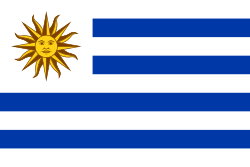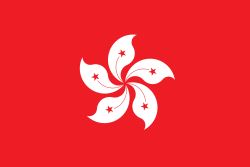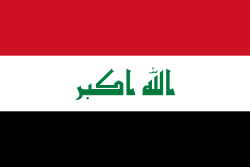Izraelská fotbalová reprezentace
| Izrael | |||
|---|---|---|---|
| Přezdívka | The Blue and Whites (Modří a bílí) | ||
| Asociace | Izraelská fotbalová asociace | ||
| Konfederace | UEFA (Evropa) [1] | ||
| Hlavní trenér | |||
| Nejvíce startů | Josi Benajun (101) | ||
| Nejlepší střelec | Eran Zahavi (35) | ||
| Kód FIFA | ISR | ||
| Žebříček FIFA | 98 (listopad 2017)[2] | ||
| První zápas | |||
(Káhira, Egypt; 16. března 1934) | |||
| Nejvyšší výhra | |||
(Wellington, Nový Zéland; 23. března 1988) | |||
| Nejvyšší prohra | |||
(Káhira, Egypt; 16. března 1934) | |||
| Mistrovství světa | |||
| Účasti | 1× (první v roce 1970) | ||
| Nejv. úspěch | Základní skupina | ||
| Mistrovství Evropy | |||
| Účasti | 0× (první v roce ) | ||
| Stránka týmu na FIFA.com | |||
| Údaje v infoboxu aktuální k 23. 7. 2024 Některá data mohou pocházet z datové položky. | |||
Fotbalová reprezentace Izraele reprezentuje Izrael na mezinárodních fotbalových akcích, jako je mistrovství světa nebo mistrovství Evropy.
Izrael byl v historii členem celkem tří konfederací: AFC, OFC a nyní je členem UEFA. Nejprve byl podle geografických kritérií přidělen do asijské zóny, ale kvůli politickým důvodům (zejména protože arabské země nechtěly proti Izraeli nastupovat), se přestěhoval do oceánské zóny. A nakonec se v 90. letech přestěhoval do evropské zóny.
Seznam zápasů izraelské fotbalové reprezentace na MS
| Rok | Účast | Soupisky |
|---|---|---|
| – | ||
| Nepostoupili z kvalifikace | – | |
| Nepostoupili z kvalifikace | – | |
| Nepostoupili z kvalifikace | – | |
| Nepostoupili z kvalifikace | – | |
| Nepostoupili z kvalifikace | – | |
| Nepostoupili z kvalifikace | – | |
| Nepostoupili z kvalifikace | – | |
| Základní skupina | Soupiska | |
| Nepostoupili z kvalifikace | – | |
| Nepostoupili z kvalifikace | – | |
| Nepostoupili z kvalifikace | – | |
| Nepostoupili z kvalifikace | – | |
| Nepostoupili z kvalifikace | – | |
| Nepostoupili z kvalifikace | – | |
| Nepostoupili z kvalifikace | – | |
| Nepostoupili z kvalifikace | – | |
| Nepostoupili z kvalifikace | – | |
| Nepostoupili z kvalifikace | – | |
| Nepostoupili z kvalifikace | – | |
| Nepostoupili z kvalifikace | – | |
| Nepostoupili z kvalifikace | – | |
| Celkem | Účast – 1× Zlato – 0×, Stříbro – 0×, Bronz – 0× |
| Rok | Účast | Soupisky |
|---|---|---|
| Rok | Účast | Soupisky |
|---|---|---|
| Nepostoupili z kvalifikace | – | |
| Nepostoupili z kvalifikace | – | |
| Nepostoupili z kvalifikace | – | |
| Nepostoupili z kvalifikace | – | |
| Nepostoupili z kvalifikace | – | |
| Nepostoupili z kvalifikace | – | |
| Nepostoupili z kvalifikace | – | |
| Nepostoupili z baráže | – | |
| Celkem | Účast – 0× Zlato – 0×, Stříbro – 0×, Bronz – 0× |
Odkazy
Reference
- ↑ Profil, UEFA.com
- ↑ Men's Ranking. FIFA. 23. listopadu 2017. Dostupné online. [cit. 2017-11-25].
Externí odkazy
 Obrázky, zvuky či videa k tématu Izraelská fotbalová reprezentace na Wikimedia Commons
Obrázky, zvuky či videa k tématu Izraelská fotbalová reprezentace na Wikimedia Commons
Média použitá na této stránce
Chinese Taipei Olympic Flag. According to the official website of Chinese Taipei Olympic Committee, Blue Sky(circle) & White Sun(triangles) above the Olympic rings is neither the National Emblem of the Republic of China, nor the Party Emblem of Kuomintang (KMT), but a design in between, where the triangles do not extend to the edge of the blue circle, as registered at International Olympic Committee in 1981 and digitally rendered in 2013. Besides, the blue outline of the five-petaled plum blossom is broader than the red one. Moreover, the CMYK code of the blue one and the Blue Sky & White Sun is "C100-M100-Y0-K0", and different from the Olympic rings (C100-M25-Y0-K0). Note that it's the only version recognized by IOC.
This is the national flag of Belgium, according to the Official Guide to Belgian Protocol. It has a 13:15 aspect ratio, though it is rarely seen in this ratio.
Its colours are defined as Pantone black, Pantone yellow 115, and Pantone red 032; also given as CMYK 0,0,0,100; 0,8.5,79,0; and 0,94,87,0.Flag of Australia, when congruence with this colour chart is required (i.e. when a "less bright" version is needed).
See Flag of Australia.svg for main file information.Used color: National flag | South African Government and Pantone Color Picker
| zelená | rendered as RGB 0 119 73 | Pantone 3415 C |
| žlutá | rendered as RGB 255 184 28 | Pantone 1235 C |
| červená | rendered as RGB 224 60 49 | Pantone 179 C |
| modrá | rendered as RGB 0 20 137 | Pantone Reflex Blue C |
| bílá | rendered as RGB 255 255 255 | |
| černá | rendered as RGB 0 0 0 |
Football kit template socks
The Palestine Ensign, flown by ships registered in the British Mandate territory during the period 1927–1948. This was the only Palestine-specific flag which was not restricted to official use by a government functionary or department (see Flag of the British Mandate for Palestine).
Autor: SpitEsch, Licence: CC BY-SA 4.0
Association football kit right arm
Autor: Derived from image:soccer ball.svg, this version made by User:Ed g2s., Licence: CC0
A soccer ball with shade.
Autor: F l a n k e r, Licence: CC BY-SA 2.5
Flag of the Kingdom of Sardinia (1851-1861) and of the Kingdom of Italy (1861-1946). Use: Civil flag and ensign. In a governmental or a military context, the crowned version (see Crowned version) was always used (as State flag and naval ensign).
flag of the Kingdom of Egypt (1922–1953) and the Republic of Egypt (1953–1958).
Při zobrazení tohoto souboru lze snadno přidat orámování
Flag of Portugal, created by Columbano Bordalo Pinheiro (1857-1929), officially adopted by Portuguese government in June 30th 1911 (in use since about November 1910).
cancel symbol dark red
Flag of Iran. The tricolor flag was introduced in 1906, but after the Islamic Revolution of 1979 the Arabic words 'Allahu akbar' ('God is great'), written in the Kufic script of the Qur'an and repeated 22 times, were added to the red and green strips where they border the white central strip and in the middle is the emblem of Iran (which is a stylized Persian alphabet of the Arabic word Allah ("God")).
The official ISIRI standard (translation at FotW) gives two slightly different methods of construction for the flag: a compass-and-straightedge construction used for File:Flag of Iran (official).svg, and a "simplified" construction sheet with rational numbers used for this file.
Autor: SpitEsch, Licence: CC BY-SA 4.0
Association football kit right arm
Chinese Taipei Olympic Flag. According to the official website of Chinese Taipei Olympic Committee, Blue Sky(circle) & White Sun(triangles) above the Olympic rings is neither the National Emblem of the Republic of China, nor the Party Emblem of Kuomintang (KMT), but a design in between, where the triangles do not extend to the edge of the blue circle, as registered at International Olympic Committee in 1981 and digitally rendered in 2013. Besides, the blue outline of the five-petaled plum blossom is broader than the red one. Moreover, the CMYK code of the blue one and the Blue Sky & White Sun is "C100-M100-Y0-K0", and different from the Olympic rings (C100-M25-Y0-K0). Note that it's the only version recognized by IOC.
An icon that represents a silver medal
An icon that represents a bronze medal
An icon that represents a gold medal




















































